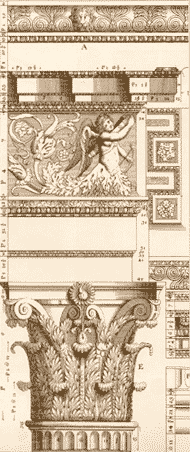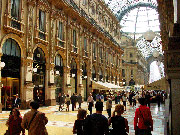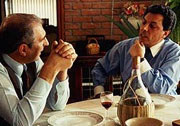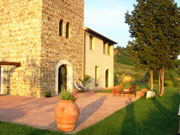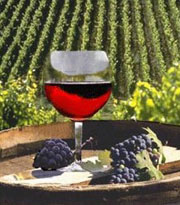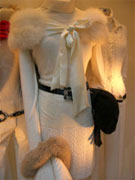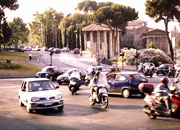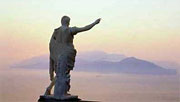
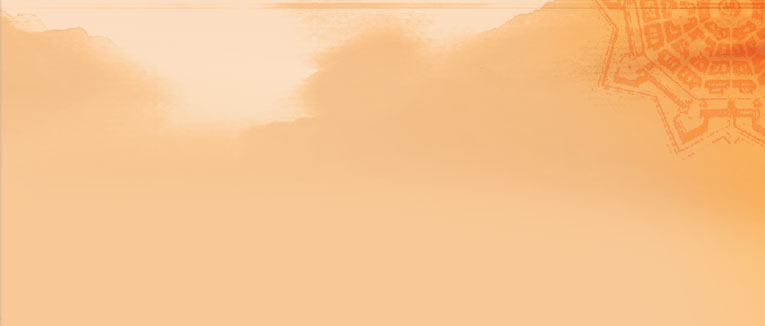


Those who have visited Italy have discovered that it is a beautiful country with its own special rhythm, lifestyle and habits. Most of them want to return because it never finishes to surprise and be enjoyed and appreciated. Italy is a must-destination. Let us shine some light for you on this already.
Italy has always been a nation like a united collage of different Cultures. It is like a mosaic! Even if their Regional Cultures differentiate from one to another one, in reality they are still the essence of what was one time the Roman Empire. Italy has a long history of which Italians are rightly very proud of. Italy is the birthplace of the Western Civilization. After the Roman Empire, Italy has always been a collage of City-States, Kingdoms, Republics, Territories of the Popes, Occupied areas, each one with its own identity, economy and culture. Even after the re-unification, Italy has retained more than one image. The mentality, the looks of people, the food, the landscapes, even the local dialects: they all differ from region to region. This is one of the main factors that make Italy such a fascinating country to visit and explore. Italians still believe in the family and the group of friends. On Sunday, especially in the South of Italy, which is still more rural than the north, the whole family usually comes together for a big lunch. In Italy, eating is not something you simply do to survive. Eating is socializing, conversing, debating. The food is appreciated very carefully and enjoyed with a good glass of local wine. The conversations they have are passionate and still sometimes accompanied by a lot of body language. The Italians are famous for being good hosts and they are! An Italian is very proud of his or her region of birth and is usually willing to show you around and tell you everything about it. If you are lucky you will even get a taste of the specialties of the regional cuisine. Appointments are rarely made in Italy, outside the large cities. A spontaneous phone call will usually lead to meeting each other not at one persons house, but in a square (piazza) or bar or simply while strolling in the streets. This spontaneity also sometimes leads to not being as punctual as they should be, but on the other side this also means more unexpected opportunities and surprises, which Italians are great in exploiting them.
The more south you go in Italy, the less people speak English or any other language besides Italian. In the north, Tuscany and the big cities you will find people that speak English, German or French. Outside of these areas it is more difficult. It is just not in the culture of the Italians to speak more languages than Italian, which is the Latin dialect from Florence. The nice thing is that when you put some effort in understanding and speaking the Italian language (doesn't need to be more than 3 words!), the Italians highly appreciate that. A small dictionary would come in handy anyway and with body language and spontaneous smiles you can make a lot clear as well.
Besides from the Northern Italian Alpine Regions, the rest of Italians have a typical Mediterranean day rhythm, especially during summer. They will enjoy lunch and then have a rest, since it can be quite hot in the middle of the day during summer time. The opening and closing hours of the shops are adjusted to this. Generally speaking, you can assume that the shops are opened from 8 AM-1 PM and then again from 4 PM-8 PM, with an hour earlier in the northern Regions and an hour later in the Southern ones. The bigger supermarkets can be opened all day, but it differs from shop to shop, so it is better to check first. Even if you want, you cannot escape this daily rhythm and it is better you adjust to it to fully enjoy the Italian lifestyle. When you rent an apartment, house or villa for example, you will usually be asked to arrive between 4 PM-7 PM. Now, in larger towns the lifestyle is more International and similar to the rest of the Western World, but smaller towns and villages still retain their rural, traditional way of living.
There are many accommodations to be found in Italy: from very luxurious hotels to cosy Bed & Breakfasts; from beautiful country villas and castles to rural farmhouses (agriturismo). Luxurious or less luxurious, there is usually a touch of tradition to be found in every accommodation, like terracotta floors, wooden beams, etc. When you are in the countryside, city people should not be surprised to find insects, farm animals even small wildlife. In some rural areas, electrical power supply is less stable, but it is usually up again within 30 minutes. Please be open minded and flexible, because the accommodations will have different standards than what you might be used to. The accommodations that you will find on this website have all been carefully chosen for their convenient location or for their charm, ambiance, quaintness and local, historical and architectural character. These accommodations will all have a private bathroom with bathtub and/or shower. Agriturismo are farms which can accommodate those who really enjoy being in farm houses, in contact with nature, animals, farming activities and they are mostly working farms with all the noise, dirt, etc. associated with the working activities of a rural living. Villas and Apartments are short-term rental properties and they are not Hotels. You are responsible of your own staying and the property owners/managers are available only for emergency reasons. Hotels, B&B and overnight staying have all different architecture and standards and be prepared that all accommodations have different size rooms, bathrooms, stairs, etc. Most elevators, when available, are small in size. Italy is a country where modern facilities, equipment, etc. ad to be integrated into old/historical buildings and therefore they had to "fit" somewhat with the pre-existing realities.
Food has a major social role in Italian society. Breakfast, la colazione, for the Italians doesn't consist of more than a cappuccino and a brioche even if now in most hotels you will find a buffet breakfast available. This is the only time Italians drink cappuccino during the day. The rest of the day one drinks espresso, usually taken standing up in one of the numerous Italian bars. The main meal in Italy is the lunch, il pranzo, which can be a three course meal, even if in larger towns people have modified their traditional family-lunch with a fast business-like meal. In the evening one has dinner, la cena, which can also be a three-course meal again, unless you had a big lunch. Many times Italian enjoy to go out for a pizza in the evening with friends or family. By the way, pizza is also an Italian invention. The food is usually accompanied by water and wine. Who thinks that Italians are big drinkers is wrong, because the wine is poured in modest quantities. Bottle mineral water is always ordered by Italians next to wine or other drinks. This is not because the natural water is not drinkable, but because Italy is the leading country on mineral waters and it is used for dietary purposes. Another thing that is always on the table is bread. In some regions, like Tuscany and Umbria, they serve bread without any salt. When you go out for a meal, please remember not to pay too much attention on the restaurant appearance. In the worst looking restaurants you might get the best food you ever had! Most restaurants do not open until 7:00 PM in the north, 8:00 PM in the Central Italy and 9:00 PM in the deep South, so keep that in mind as well. Each region has its own specialties. Before lunch or dinner, Italians like to drink an aperitivo, usually a Campari, Cinzano or Amaro, a bitter drink. Italians menus are mostly a la carte. Whenever you sit in a restaurant, trattoria or osteria and being served at the table, it is not customary to split orders between two people. You usually order two or more items from the menu. A meal traditionally starts with a primo piatto (starter), which can also be anticipated by some antipasti (grilled vegetables, mozzarella and cold cuts) for example. Then follows a secondo piatto (main course). Depending on whether you are on the coast or in the countryside, you will find more fish or more meat on the menu. To go with the main course you can order side dishes (contorni) like vegetables, potatoes and salads. The Italians are great in desserts, which are called dolci. This can be cake, cookies, ice cream or fresh fruit cocktail (Macedonia). Don't forget also to taste the ice cream in a gelateria (ice cream shop). Italians have invented the ice cream and are real masters in it! Tips are already included but always well accepted if you wish.
Italy is the leading country for fashion, which is reflected in the way the Italians like to dress: comfortable, but with a certain class. Although casual clothing is well accepted for travelers, you will see this mostly in beach resorts and for outdoor activities. The local tradition is to dress accordingly the city-dress code. You will see Italians wearing a lot of dark colors, especially during fall/winter time. Sleeveless shirts and shorts are not recommended especially when you visit a city and are not permitted when visiting churches. Churches have signs and dress codes. When Italians go out, for an evening in the theatre or to a nice restaurant, they like to dress up. For men, a sport jacket is appropriate. What you do not see among Italians, unless they are teenagers, are T-Shirts with advertisement, white tennis shoes and baseball hats. Just keep in mind that layering, color coordinating & dark conservative clothes travel best. Light weight (warm) sweaters, slacks & a light-weighted raincoat are good to bring.
A lot has been said about the driving behavior of the Italians. The last few years this behavior has been improved a lot, because the authorities have introduced a drivers license with a point system. Even though there has been an improvement, it remains an adventure to drive on the Italian roads for foreigners. The way people overtake sometimes, would not look bad at all in an average action movie and when three cars fit in a two-lane road, why not use the space? The maximum speed on toll highways is set to 130 Km/hr., on separated 4-lanes "Superstradas" is 110 Km/hr, on most out of town roads at 70 Km/hr and in populated areas at 50 Km/hr. When more than one lane, keep the right lane to drive and the left one to pass. After passing, pull back in the right lane immediately to continue your way there, before the drivers in the cars behind will try to make you understand to move over faster. It is important not to block the traffic, even if it looks like you are the only one trying to follow the law! Where you enter the major highways, you go through a toll-boots to get a ticket. Where you leave these highways, you pay, either with credit card or in cash. Make sure to choose the correct toll-booth, because many are only for those who have special permissions, electronic pre-paid agreements, etc. Driving on the highways is the easy part. On the secondary roads it might be a bit confusing every now and then. It can be that you find two signs for the same village, each pointing in a different direction. Just always make sure that you have a good detailed map of Italy with you when driving on your own. Be careful of speeding: numerous hidden cameras record your speed all over Italy and you risk receiving a violation ticket in the mail. Parking is a major problem and cars get towed away easily. Remember that the police in Italy is highly respected. It is mandatory to have the headlights on outside the city areas and always to wear seat belts. Please remember that also service stations can be closed during lunchtime. For non-Europeans, this could become a challenge also because roads, signs, etc. are all different. In Italy you drive on the right side of the road and it is important you keep your right side of the road because other vehicle can pass only on the left side. Parking is a major problem and cars get towed away easily.
Please read some good Travel Books/Guides to Italy before departing for your trip. We suggest, among others, the green Michelin Guide to Italy. The more you familiarize with its fascinating geography, culture and history, the more you will enjoy and appreciate Italy. Familiarize as much as possible with Italian Traditions and Customs, which have changed and modernized a lot especially after WW2. Do not think that what you have heard about Italy or seen in past movies are still accurate. Today, Italy is a modern, contemporary country, the 5th major economic power in the world and many stereotypes of the past have disappeared. Italy will surprise you again and again!!!
AFTER READING THESE TIPS, WE HOPE YOU WILL BE A BIT MORE PREPARED FOR

LEGAL DOCUMENTS FOR ITALY
Traveling to Italy you will need a valid passport, that can not expire during your stay in Italy! For citizens of some countries a Visa is also required. Please check with the Italian Embassy/ Consulate in your own country to see which legal documents are required in your specific case. Always bring passport and other documents with you while traveling. We suggest you to make copies of all your important documents and store them in separate places and/or leave them with friends/family.
INSURANCES
Spirit of Places Ltd. strongly recommends to purchase a Comprehensive Travel Insurance for protection against trip cancellation/ interruption health, emergencies, injuries, health problems, death, accidents and or illness, loss, damage, theft of luggage and / or personal belongings. Please, check with Spirit of Places Ltd. if you need more information about this kind of Comprehensive Travel Insurance.
PERSONAL ATTENTION
Always bring the passport and other documents with you. Also, remember the name of your hotel/property and always pay attention to your belongings wherever you are. Make copies of your documents and store them in separate places and/or leave them with friends/ relatives.
WEATHER IN ITALY
Italy has a moderate Mediterranean climate with a more Continental one in the mountain areas. A Mediterranean climate might also mean a higher humidity than you might be used to. There are four distinctive seasons, but lately weather is becoming more and more unpredictable also for Italy. A foldable umbrella is a good thing to bring with you as well to Italy. This beautiful country isn't so lush for nothing!
HOW TO PACK
Because luggage space in always very limited, especially when you rent a car, we strongly recommend to travel light. You can always enjoy shopping when in Italy! Remember to include: facial tissues, shampoo, comfortable walking shoes, a light raincoat, a foldable umbrella, a sweater. Bring suitcases with wheels because, especially at airports and maybe in other places, you will have to carry your own luggage. Bring with you everything you need for your person, including medicines, contact lenses, glasses, etc. Please keep in mind that even if rental-cars/vans have the right number of seats you expect, luggage space varies from vehicle to vehicle and Rental Car Companies never guarantee the model of the vehicle, but only the Class! To travel very light is a must for comfort, relaxation and enjoyment!
ELECTRICAL POWER
The electrical current in Europe is AC 220 Volt and the cycle is 50. For your electrical appliances, you should bring a transformer and an adapter plug. You should be able to find everything you need at any luggage store or airport. For travelers from those countries where different voltage is used, their own curling irons sometimes do not work because their internal fuse burns immediately even if you have a transformer. It is not a bad or expensive idea to buy a dual-voltage Travel curling Iron and/or Hair Dryer in your own country or even better one in Europe (airport/first stop).
MONEY IN ITALY
In Italy the currency is Euros. The best thing to do is to bring with you a credit card (possibly VISA, since it is best accepted) with an international PIN number. Your own bank debit card with an international PIN number will also be fine, but to be sure, check with your own bank to see if it will work in Europe. Carrying one of these cards it is easy to take out money out of one of the numerous ATM/Exchange money machines in Italy at your convenience. Travelers Checks are not so convenient anymore, since you always need to go to a bank to change money and be subject to customer lines, while the ATM machines are opened 24 hours a day and you can withdraw money in local currency (Euros) and at specific amounts chosen by you. Even if there are some fees involved, exchange rates are quite favorable using this system. Also, it is a good idea to arrive in Italy with some Euro-Cash for the first few days, just in case you do not find an ATM machine available and for small purchases like drinks.
LAUNDRY & DRY CLEANERS
It is not very convenient and it takes days to use Dry Cleaning services. It is very expensive to ask your hotel for this service. Spirit of Places Ltd. strongly suggests that you pack what is necessary for your trip, and avoid bulky items. In Italy clothes dryers are rarely available. If you decide to wash your own items, please keep in mind that it will take longer to dry due to the higher humidity.
